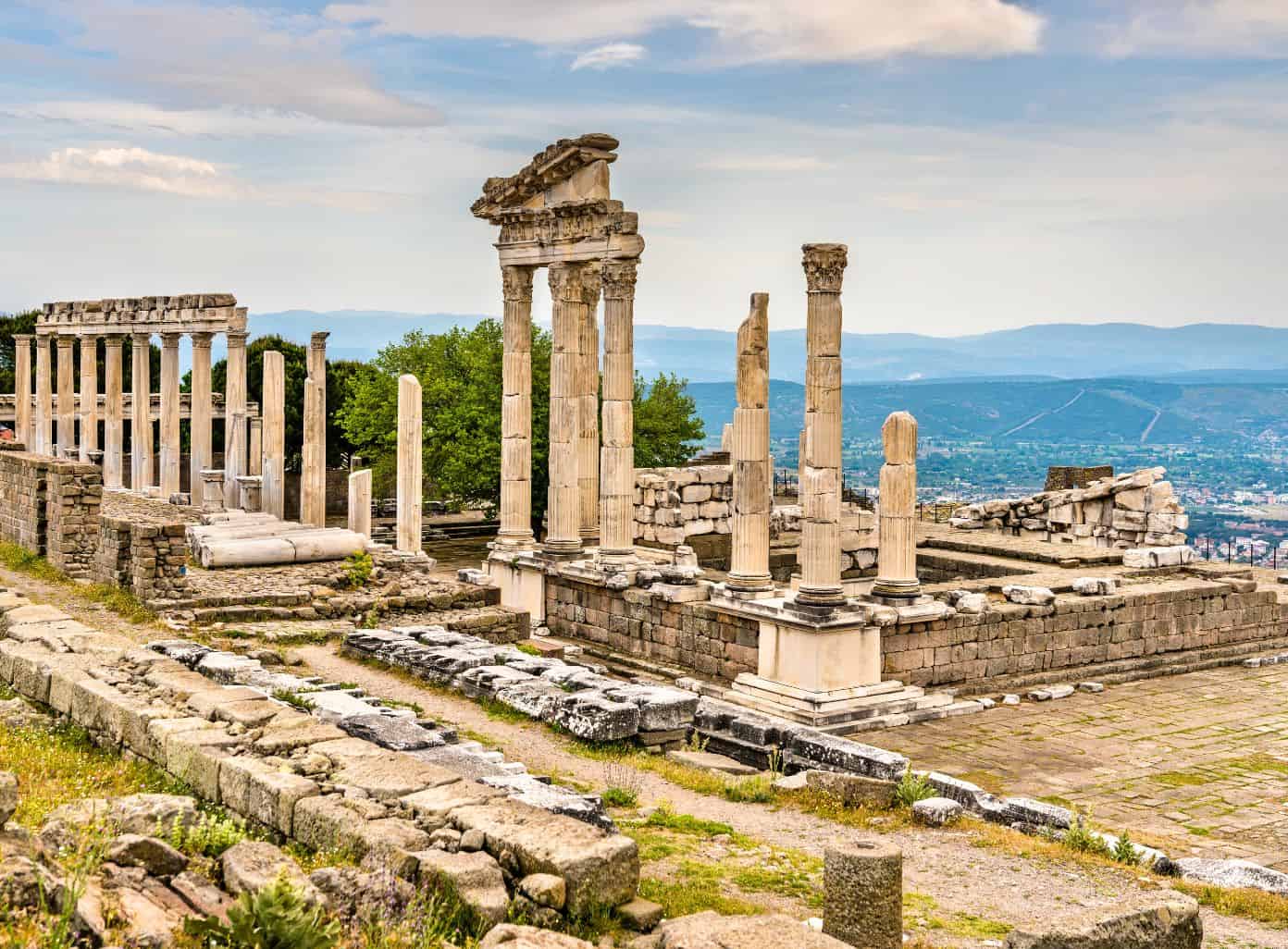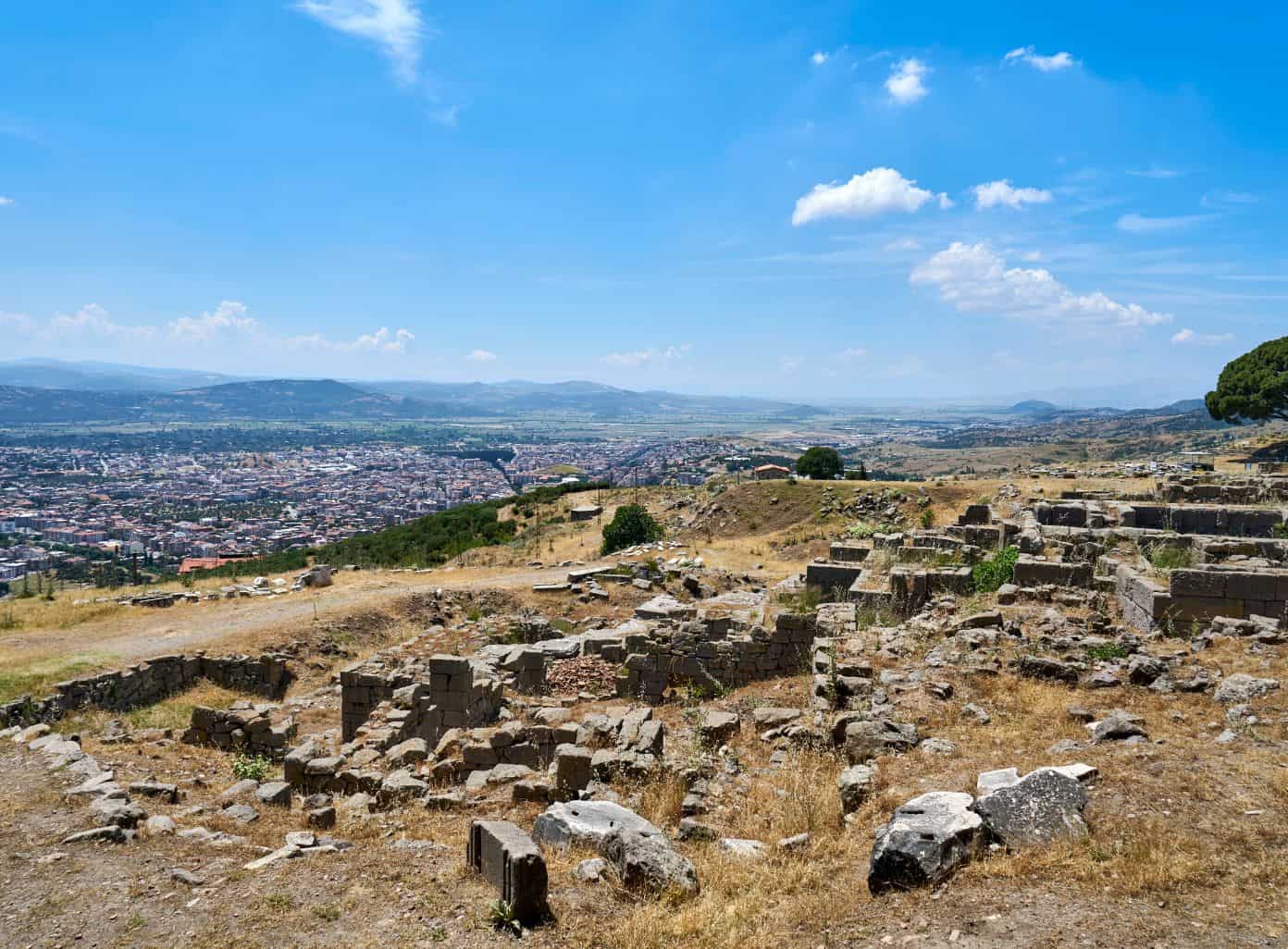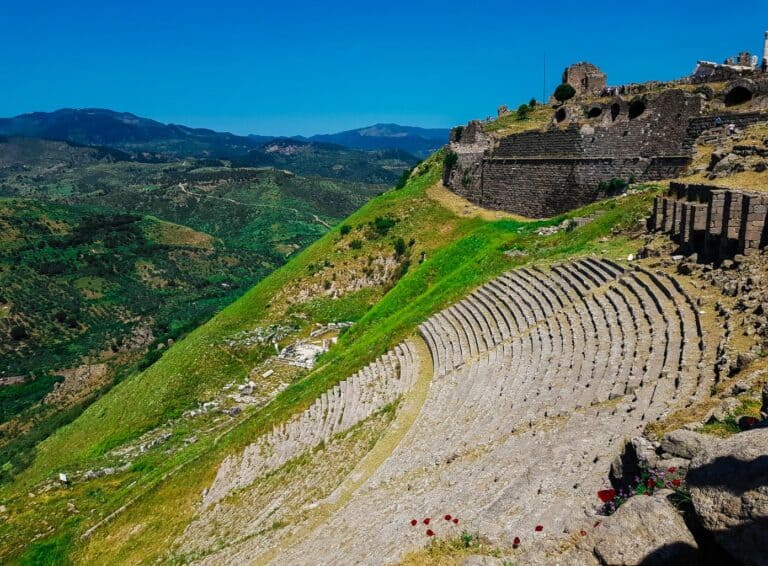Exploring the Historical Gem of Pergamon
Introduction to Pergamon
Situated in the western part of Turkey, Pergamon is a captivating city steeped in history and cultural significance. Known for its rich heritage and architectural marvels, Pergamon attracts visitors from around the world who are eager to immerse themselves in its historical charm and beauty.

Significance of Pergamon in Turkish History
Pergamon holds immense significance in Turkish history as it was once the capital of the Kingdom of Pergamon during the Hellenistic period. The kingdom, founded by Philetaerus, flourished under the rule of the Attalid dynasty and became a major center of culture, art, and learning.
The city’s influence extended beyond its borders, contributing to the development of medicine, literature, and philosophy. Pergamon was home to the renowned Pergamon Library, one of the most significant libraries of the ancient world. Its collection of scrolls and manuscripts attracted scholars and intellectuals from far and wide, making it a hub of intellectual and cultural exchange.
Furthermore, Pergamon’s medical advancements and innovations made it a prominent center for healing and healthcare. The Asclepion of Pergamon, a sanctuary dedicated to the Greek god of healing, Asclepius, drew patients seeking medical treatments and spiritual healing.
Today, Pergamon stands as a testament to the rich historical heritage of Turkey. Exploring the ancient ruins and architectural wonders of Pergamon allows visitors to transport themselves back in time and gain a deeper understanding of the region’s cultural and intellectual legacy.
In the following sections, we will delve into the historical background of Pergamon and explore its key architectural highlights, including the famous Pergamon Altar and the magnificent Theatre of Pergamon.

The Ancient City of Pergamon
As we delve into the historical gem of Pergamon, it’s essential to explore the historical background and key architectural highlights of this ancient city.
Historical Background of Pergamon
Pergamon, located in present-day Turkey, holds great historical significance. It was an ancient Greek and later Roman city that thrived during the Hellenistic period. Founded in the 3rd century BCE, Pergamon rose to prominence under the rule of the Attalid dynasty.
Known for its rich cultural and intellectual heritage, Pergamon became a center of learning and innovation. The city was renowned for its library, healing center, and grand architectural structures. Pergamon’s influence extended beyond its borders, shaping the cultural and intellectual landscape of the region.
Key Architectural Highlights
Pergamon is renowned for its impressive architectural achievements, which provide a glimpse into its glorious past. Some of the key architectural highlights include:
- The Pergamon Library: The library of Pergamon was one of the most renowned libraries in the ancient world. It housed thousands of scrolls and manuscripts, making it a center of knowledge and scholarship. Although the original library no longer exists, its legacy and influence on intellectual pursuits are undeniable.
- Pergamon’s Medical Advancements: Pergamon was home to the Asclepion, a healing center dedicated to the Greek god of medicine, Asclepius. The medical advancements made in Pergamon were groundbreaking, and the city became a hub for medical education and research. Pergamon’s medical achievements contributed significantly to the development of ancient medicine.
Visiting Pergamon today offers a unique opportunity to explore the remnants of this ancient city and witness the architectural marvels that have stood the test of time. With its rich history and cultural significance, Pergamon continues to captivate visitors from around the world.
In the next sections, we will delve into the Acropolis of Pergamon and provide tips for visiting this historical site. But first, let’s explore the cultural and intellectual influence of Pergamon, particularly through its library and medical advancements.
Pergamon’s Cultural and Intellectual Influence
Pergamon, with its rich historical legacy, was not only a center of political power but also a hub of cultural and intellectual advancements. Within the ancient city, two notable contributions stand out: the Pergamon Library and the city’s medical advancements.
The Pergamon Library
The Pergamon Library, also known as the Library of Pergamum, was one of the most renowned libraries of the ancient world. It housed an extensive collection of scrolls and manuscripts, rivaling the Library of Alexandria in its significance. The library played a pivotal role in the preservation and dissemination of knowledge during the Hellenistic period.
The development of the Pergamon Library was a response to the Ptolemaic rulers’ ban on the export of papyrus, the primary writing material at the time. To overcome this limitation, the people of Pergamon turned to a new writing material known as pergamon, made from treated animal skins. This invention, which led to the creation of parchment, allowed for the expansion of the library’s collection and the continued pursuit of intellectual endeavors.
Pergamon’s Medical Advancements
Pergamon was also renowned for its significant contributions to the field of medicine. The city became a center for medical education and innovation, attracting scholars and physicians from far and wide. The Asclepion of Pergamon, a healing center dedicated to the god of medicine Asclepius, played a crucial role in advancing medical knowledge.
One of the most notable figures associated with Pergamon’s medical advancements was Galen, a renowned physician and philosopher. Galen’s contributions to anatomy, physiology, and pharmacology greatly influenced the development of medicine in the ancient world and beyond. His works served as a foundation for medical studies for centuries.
The medical advancements in Pergamon were not limited to theoretical knowledge. The city was also known for its practical approach to healthcare, with physicians actively involved in the treatment and care of patients. Pergamon’s medical practitioners were skilled in various fields, including surgery, pharmacology, and therapy.
These cultural and intellectual influences of Pergamon have left a lasting impact on the world of knowledge and medicine. Today, visitors can explore the remnants of this historical gem and gain insights into the remarkable achievements of the ancient city.
To learn more about the historical significance of Pergamon and plan your visit, check out our articles on Turkey’s history and traveling to Turkey.
The Acropolis of Pergamon
Situated in the ancient city of Pergamon, the Acropolis stands as a testament to the rich history and architectural prowess of the region. Within the Acropolis, two prominent structures captivate visitors: the Pergamon Altar and the Theatre of Pergamon.
The Pergamon Altar
The Pergamon Altar, also known as the Great Altar of Pergamon, is a monumental structure that once adorned the acropolis of the ancient city. Built during the 2nd century BC, this impressive altar served as a symbol of the city’s power and influence.
The altar is notable for its intricate friezes depicting scenes from Greek mythology, particularly the Gigantomachy, a battle between the gods and the giants. The friezes, now housed in the Pergamon Museum in Berlin, Germany, showcase the exceptional artistic skill and attention to detail of the ancient sculptors.
The Theatre of Pergamon
The Theatre of Pergamon, situated on the slopes of the acropolis, is another remarkable architectural marvel. Built during the Hellenistic period, this ancient theatre could accommodate up to 10,000 spectators, making it one of the largest theatres in the ancient world.
The theatre’s design is renowned for its excellent acoustics and its impressive seating arrangement, which offered excellent views of the stage from all angles. The stage building, known as the skene, incorporated intricate architectural elements that added to the grandeur of the theatre.
Today, visitors to Pergamon can explore the remains of the theatre, marveling at the scale and craftsmanship that went into its construction. It serves as a testament to the ancient city’s cultural significance and its contribution to the world of performing arts.
When visiting the Acropolis of Pergamon, taking the time to appreciate the Pergamon Altar and the Theatre of Pergamon is essential. These architectural wonders provide a glimpse into the rich history and cultural heritage of the ancient city, leaving visitors with a profound appreciation for the legacy of Pergamon.
Visiting Pergamon Today
If you’re planning to visit Turkey, a trip to the historical gem of Pergamon should be on your itinerary. Pergamon, located in modern-day Turkey, offers a fascinating glimpse into the country’s rich history. Before embarking on your journey, it’s important to understand the accessibility and location of Pergamon, as well as some tips for exploring the site.
Accessibility and Location
Pergamon is situated in the western part of Turkey, approximately 100 kilometers north of Izmir. The nearest airport is Izmir Adnan Menderes Airport, which serves both domestic and international flights. From the airport, you can reach Pergamon by hiring a car, taking a taxi, or using public transportation.
Once you arrive in Pergamon, you’ll find that the archaeological site is located on a hill, providing stunning views of the surrounding landscape. The site is extensive, so be prepared for some walking and wear comfortable shoes. It’s advisable to visit Pergamon during the cooler months to avoid the scorching heat of the summer.
Tips for Exploring Pergamon
To make the most of your visit to Pergamon, consider the following tips:
- Guided Tours: Engaging a knowledgeable tour guide can greatly enhance your experience at Pergamon. They can provide valuable insights into the historical significance of the site and point out architectural highlights that you might otherwise miss. Guided tours are available in multiple languages and can be arranged at the entrance of the site.
- Sun Protection: Pergamon can be quite sunny, so don’t forget to bring sun protection essentials such as a hat, sunglasses, and sunscreen. It’s also a good idea to carry a water bottle to stay hydrated throughout your visit.
- Comfortable Attire: As you explore the site, wear light, breathable clothing that allows for ease of movement. Consider bringing a small backpack to carry your essentials, including a camera to capture the beauty of Pergamon.
- Time Management: Pergamon is a vast archaeological site with numerous points of interest. Plan your visit accordingly and allocate ample time to explore the key highlights, such as the Pergamon Altar and the Theatre of Pergamon. It’s recommended to arrive early in the day to avoid crowds and make the most of your time.
- Respectful Behavior: Pergamon is a place of historical and cultural significance. Show respect for the site by refraining from littering, defacing any structures, or engaging in any activities that may cause harm to the site or disrupt other visitors.
By keeping these tips in mind, you can have a memorable and fulfilling experience while exploring the historical wonders of Pergamon. Prepare yourself for a journey back in time as you delve into the fascinating history and architectural marvels of this ancient city.
Conclusion
Pergamon stands as a testament to Turkey’s rich historical and cultural heritage. This enchanting city, with its ancient ruins and architectural wonders, offers a captivating glimpse into the past. Whether you are a history enthusiast or simply curious about Turkey’s historical gems, Pergamon is a must-visit destination.
The historical significance of Pergamon in Turkish history cannot be understated. From its rise as a powerful ancient city to its cultural and intellectual contributions, Pergamon has left an indelible mark. The Pergamon Library and the city’s advancements in the field of medicine are prime examples of the intellectual prowess that thrived within its walls.
Visitors to Pergamon are treated to a visual feast of architectural marvels. The Pergamon Altar, a monumental structure adorned with intricate reliefs, and the grandeur of the Theatre of Pergamon are testaments to the city’s architectural prowess and artistic achievements.
Today, Pergamon continues to allure travelers from around the world. Its accessibility and location make it a convenient stop for those exploring the wonders of Turkey. To make the most of your visit, remember to plan ahead, wear comfortable shoes, and take advantage of guided tours to fully immerse yourself in the history and splendor of Pergamon.
As you explore Pergamon, be sure to also indulge in the culinary delights and immerse yourself in the vibrant culture that Turkey has to offer. For more information on other captivating destinations in Turkey, check out our articles on Turkey cuisine, Turkey beaches, and Turkey architecture.
Experience the charm of Pergamon and witness the enduring legacy of this historical gem. Let the stories of the past come alive as you wander through its ancient streets, marvel at its architectural wonders, and immerse yourself in the rich history that Pergamon has to offer. Plan your trip to Pergamon today and embark on a journey through time.


